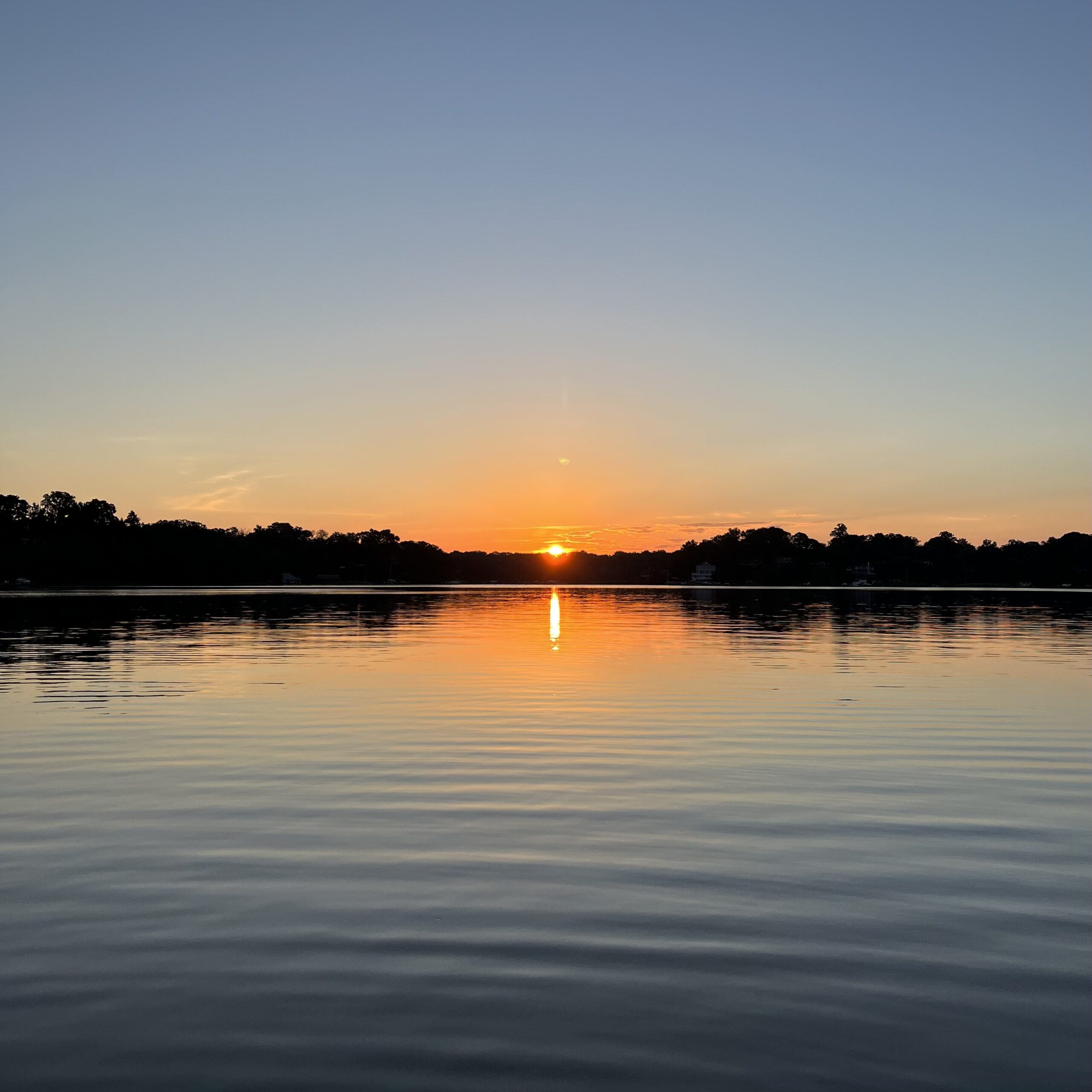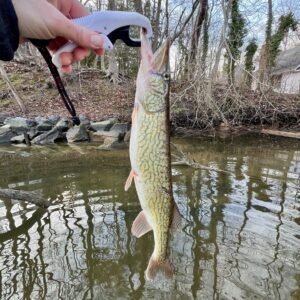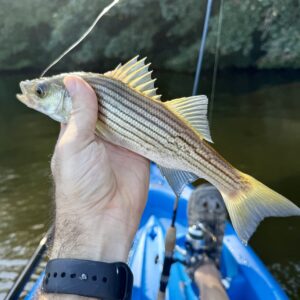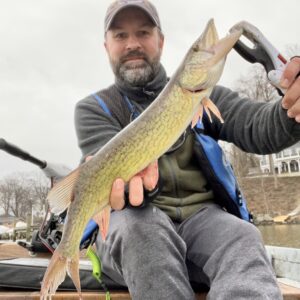Welcome to the Weekly Creel, a compilation of regional news and announcements for anglers and outdoor enthusiasts of the Chesapeake Bay region. Please email us directly at editor@reelchesapeake.com to have your organization’s news item or event listing considered for next week’s column. Per usual, here are direct links to the lastest, local fishing reports from Reel Chesapeake, Maryland Department of Natural Resources, Anglers Sports Center, and FishTalk Magazine. This week’s catch also includes…
Hey Now, It’s Earth Day 2023
Quick acknowledgement of this special day for our special place. So far, Earth remains an original. There’s no place quite like it and the planet is the only home we’ll experience in our lifetimes. Let’s hope mankind will rally together to help this bright blue ball that’s spinning, spinning free (and if you get that reference, let me know). Check out all things Earth day at earthday.org. It’s also my mom’s bday, so Happy Birthday Mom!
ICYMI: “Fishing on the Severn” Recorded for Viewing
Last week, local expert angler and author Shawn Kimbro delivered a nearly 1.5-hour presentation to members of the Severn River Association and the public, live at Cafe Mezzanotte in Severna Park. As part of the John Wright Speaker Series, the topic, “Fishing on the Severn,” attracted a full audience and, thankfully, the presentation was recorded and can be viewed online anytime by clicking here. Kimbro’s talk covered a wide range of species, tackle, and tips for this mid-Bay watershed. SRA’s next John Wright Speaker Series event is scheduled for June 20th at 6:30 p.m., also at Cafe Mezzanotte. Details forthcoming.
MPT Airs “Chesapeake Bay Week” Programming
This week, Maryland Public Television has celebrated its annual “Chesapeake Bay Week” of programming, which concludes this evening. Today’s programming features six newly-crafted shows that focus on Bay issues. They are: “Wetlands of Wonder: The Hidden World of Vernal Pools”; “Island Empire”; “Eatin’ Blue Catfish: Chesapeake Style”; “Water’s Edge: Black Watermen of the Chesapeake”; “Kent County’s Storied Landscape”; and “Discovering the Dove”. We’re particularly interested in the blue catfish episode, which will “visit the kitchens of Maryland-area chefs as they get creative, testing delicious ways to prepare and serve this savory predator in preparation for a seafood cooking competition,” according to MPT. Check out the full program schedule here and be on the lookout for many of these programs to repeat on the air in the future.
Wilma Lee Skipjack Tours Begin
Annapolis Maritime Museum & Park (AMM) has announced a new departure location for the skipjack Wilma Lee’s public cruises. The historic Chesapeake Bay workboat will sail by way of the Annapolis City Dock at Burtis Dock, on the north side of Susan Campbell Park, allowing Annapolis visitors and locals the opportunity to take a deck tour or a cruise on the Chesapeake Bay. Beginning May 5th, AMM will offer a variety of excursions, including Heritage Tours, Sunset Cruises, and Wednesday Night Race Watch Parties.
“As a Maritime Museum we are delighted to see our authentic skipjack berthed downtown, where not too long ago the harbor was packed full of them, it is our hope she becomes an iconic symbol of Annapolis”, stated Alice Estrada, President and CEO of the Annapolis Maritime Museum & Park.
AMM acquired the skipjack in 2018, one of only 22 remaining and spent two years to have her restored. She is a floating classroom that allows AMM to continue to further AMM’s mission by serving as a tool to teach visitors and program participants about Annapolis’ rich maritime history, oyster dredging and the ecology of the Chesapeake Bay. For reservations and tickets please visit amaritime.org/skipjack-tours. Photograph courtesy Annapolis Maritime Museum.
2023 Mid-Atlantic State of the Ecosystem Report Released
As reported in April 8th’s Weekly Creel, the Mid-Atlantic Fishery Management Council met in Durham, North Carolina, earlier this month for one of it’s six designated council meetings of 2023. At that meeting, NOAA Fisheries presented it’s 2023 State of the Ecosystem report for the Mid-Atlantic region. This week, the full report has been released to the public.
Dr. Sarah Gaichas (NEFSC) presented the key results and findings of the 2023 Mid-Atlantic State of the Ecosystem report. The report gives an overview of ecosystem-level indicators that evaluate the status and trends of ecological, environmental, economic, and social components of the Mid-Atlantic ecosystem. These ecosystem-level indicators consider their performance relative to fishery management objectives and the potential risks they pose to meeting management goals and objectives. Some of the key findings of the 2023 report include:
- Commercial landings in the Mid-Atlantic are at the lowest point observed, driven by recent declines in species not managed by the Mid-Atlantic Council.
- Recreational harvest remains below the long-term average; while recreational effort was near average and recreational catch diversity remains above average.
- The oceanographic conditions in the Mid-Atlantic Bight continue to change with implications for habitat, fish productivity and condition, and stock distributions.
- The proposed development of 31 different offshore wind projects is anticipated to result in a range of economic, habitat, protected species, and science risks to meeting the Council’s management objectives.
You can read or download the full report in PDF form, by clicking here.
EPA & Pennsylvania Propose Settlement for Cleaner Chesapeake Bay

This week, the Chesapeake Bay Foundation applauded a proposed settlement in a lawsuit the organization filed against the EPA for it’s failure to require Pennsylvania to develop and implement a plan to meet its commitments to reduce pollution under the Chesapeake Clean Water Blueprint. The settlement is a significant step toward reducing pollution in Pennsylvania.
It is the result of lawsuits filed against EPA during the Trump Administration by the Chesapeake Bay Foundation (CBF) and its partners including Anne Arundel County, the Maryland Watermen’s Association, and Robert Whitescarver and Jeanne Hoffman. The Attorneys General for Delaware, Maryland, District of Columbia, and Virginia filed a separate similar suit. The courts combined the cases. The public will now have 30 days to comment on the proposed settlement before it can be finalized.
EPA previously failed to require Pennsylvania to develop a plan to fully meet the pollution reduction goals, including identifying the necessary funding, or impose consequences. The settlement requires EPA to, among other things, look for ways to reduce pollution from agriculture—the state’s biggest polluting source—and stormwater runoff from urban and suburban land. As part of the settlement, EPA also commits to increase compliance and enforcement efforts.
“This proposed settlement is a win for local waterways, healthy communities, and the Chesapeake Bay. EPA focusing on concerted remedial action to address some of the most severe problems in Pennsylvania provides accountability and reasonable assurance that Bay restoration will succeed,” said CBF President Hilary Harp Falk. Full details forthcoming.
Local National Parks Donate Venison to Nonprofits
Seven national parks in Maryland, Virginia, West Virginia, and the District of Columbia have concluded this year’s annual operations to reduce overabundant white-tailed deer. These parks donated more than 12,000 pounds of venison to local nonprofit organizations that will serve approximately 48,000 meals to families in need.
Controlling populations of white-tailed deer is one of the most effective ways to support resilient forests that sustain all wildlife and plants for the long-term. Before any donation, all parks professionally process deer and participate in a chronic wasting disease (CWD) sampling program. To date all results have been negative for CWD, providing a high level of confidence that CWD does not currently exist in the deer populations in these parks. If any results from future deer management indicate the presence of CWD, the venison testing positive would not be donated.
While these seven national parks preserve different aspects of America’s history and natural treasures, all have suffered from the effects of high deer populations. Overabundant deer populations damage plants and eat nearly all tree seedlings preventing forest regeneration. Deer also damage agricultural crops, which are a key component of the historic setting at many Civil War battlefields. These national parks manage deer populations to support long-term protection and restoration of native plants and to promote healthy and diverse ecosystems for all wildlife.
Each park follows a deer management plan, developed with public input, according to the National Environmental Policy Act. Parks that participated in this year’s harvest/donation included Antietam National Battlefield, Catoctin Mountain Park, Chesapeake and Ohio Canal National Historical Park, Harpers Ferry National Historical Park, Manassas National Battlefield Park, Monocacy National Battlefield, and Rock Creek Park.
And that’s a wrap for this week’s Creel. If you have news to share, please send an email to editor@reelchesapeake.com.






